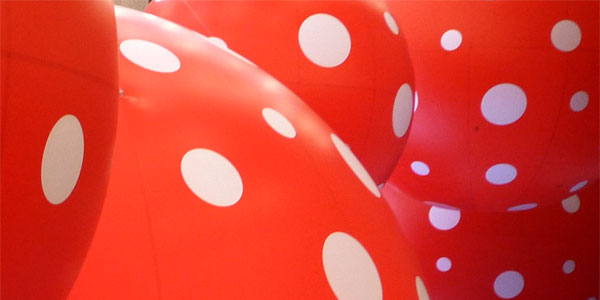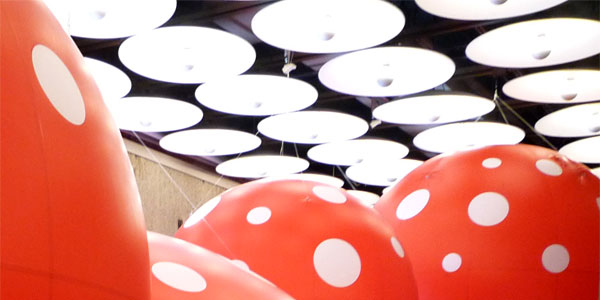1. Introduction.
Read the introduction to a blogger's post and choose the best summary of it.

The Art of Dottiness
Every so often, the electricity supply here in Larrikin's End blips for about 30 seconds. Not enough time to ruin a soufflé, but certainly enough to throw every electronic device here into a tailspin. The worst of it is having to go around and reset all the clocks. Every appliance these days feels the need to know the time and, even creepier, to have a meltdown if it momentarily loses that ability, resulting in fits of uncontrollable blinking.
This is an accurate metaphor for how I'm feeling at the moment. Suffice to say, the reconciliation with the birth mother country has hit something of a major snag. Our biorhythms are most definitely not in sync at the present moment. What this means is that I'm almost always seeking escape, and this usually involves bumming a ride on someone else's psychic Segway. Happily, in recent months, there have been plenty on which to hitch.
2. Meaning in context.
Read the introduction again. Choose the closest meaning for the underlined words and phrases.

Every so often, the electricity supply here in Larrikin's End blips for about 30 seconds. Not enough time to ruin a soufflé, but certainly enough to throw every electronic device here into a tailspin. The worst of it is having to go around and reset all the clocks. Every appliance these days feels the need to know the time and, even creepier, to have a meltdown if it momentarily loses that ability, resulting in fits of uncontrollable blinking.
This is an accurate metaphor for how I'm feeling at the moment. Suffice to say, the reconciliation with the birth mother country has hit something of a major snag. Our biorhythms are most definitely not in sync at the present moment. What this means is that I'm almost always seeking escape, and this usually involves bumming a ride on someone else's psychic Segway. Happily, in recent months, there have been plenty on which to hitch.
3. Read more.
Read the next part of the blog post and choose the best representation of the art installation described.

I was in Brisbane a few weeks ago to see the Matisse exhibition at GOMA, (of which more later), and I also popped in to the Yayoi Kusama show Look Now, See Forever. It seems to me that Kusama has this life lark figured out about right. When she's not travelling the world spreading her infectious brand of wonderfulness, she lives in a nuthouse. It could be argued that she is a lot saner than those of us who persist in butting heads with idiots for a far smaller allocation of crust when we could be decorating the world with bright colours instead.
The polka dots, her most recognisable image, are an interpretation of the hallucinations that Kusama began experiencing from an early age. As I've mentioned many times before, I'm automatically a fan of any art that can bring glee to the face of a small child. "Obliteration Room" is an interactive piece that is installed using locally sourced elements. It comprises a suite of rooms containing everyday household objects like televisions, sofas, shelves, tables and chairs, all painted in matt white. Visitors are each given a sheet of dots and instructed to place their dots where they please.
It's undoubtedly the best interactive artwork I've ever experienced. It operates on a number of levels. The children love it, of course, and it's not half fun if you're a curmudgeonly matron either. It's completely inclusive. Any person of any age or ability can place a sticky dot. It's utterly egalitarian. There is no wrong place to put your dots and no wrong way to deal with your dots. As you can see, I saved half of mine to create my own artwork, above.
Choose the correct installation.
4. Read more.
Read the remaining sections of the post and choose the option that best completes the summarising sentences.
6. Meaning in context.
Read extracts from the post. Choose the best definition for the underlined words and phrases.
I was in Brisbane a few weeks ago to see the Matisse exhibition at GOMA, (of which more later), and I also popped in to the Yayoi Kusama show Look Now, See Forever. It seems to me that Kusama has this life lark figured out about right. When she's not travelling the world spreading her infectious brand of wonderfulness, she lives in a nuthouse. It could be argued that she is a lot saner than those of us who persist in butting heads with idiots for a far smaller allocation of crust when we could be decorating the world with bright colours instead.
... As I've mentioned many times before, I'm automatically a fan of any art that can bring glee to the face of a small child. "Obliteration Room" is an interactive piece that is installed using locally sourced elements. ...
It's undoubtedly the best interactive artwork I've ever experienced. It operates on a number of levels. The children love it, of course, and it's not half fun if you're a curmudgeonly matron either. It's completely inclusive. Any person of any age or ability can place a sticky dot. It's utterly egalitarian. There is no wrong place to put your dots and no wrong way to deal with your dots. ...
Leonardo da Vinci supposedly said, "Art is never finished, only abandoned". The artist's dilemma is choosing the right moment to walk away. Nothing is ever perfect. That's a given. But over-whipping the cream leaves you with curds, whey and a naked sponge. ...
7. Missing words.

Read extracts from the last part of the blog post and decide which option best fits each gap.
8. Practice.
Read the first part of the blog post again and complete it using the words and phrases below. Note: There are THREE EXTRA WORDS which are not used.
9. Idioms and expressions.
The following sentences contain phrases from the blog post you have read. Type in the missing word to complete each sentence. If you are having trouble, you can double-click or double-tap on the space to see the first letter of the missing word.
10. Listen.

Listen to two people looking at a photo of an art installation and talking about it.
Choose the correct options below.
Listen again and read the transcript.
11. Listen.
Listen to the second part of the discussion. Put the topics in the order that they come up.
Listen again and read the transcript.
